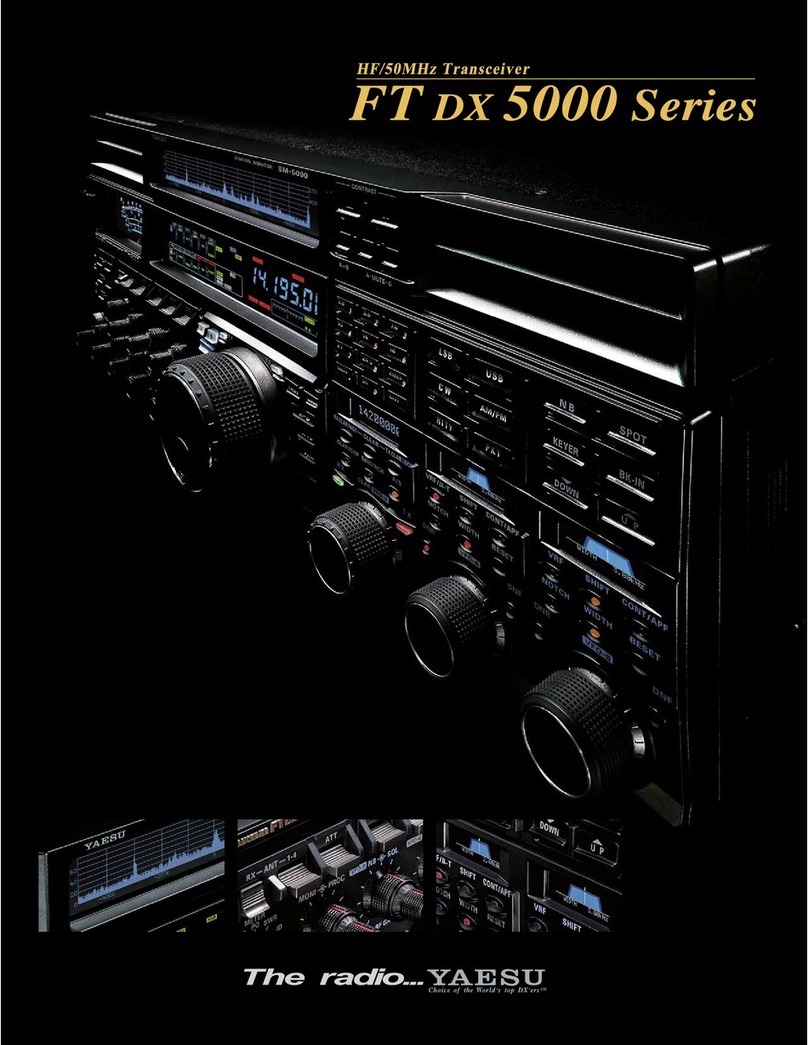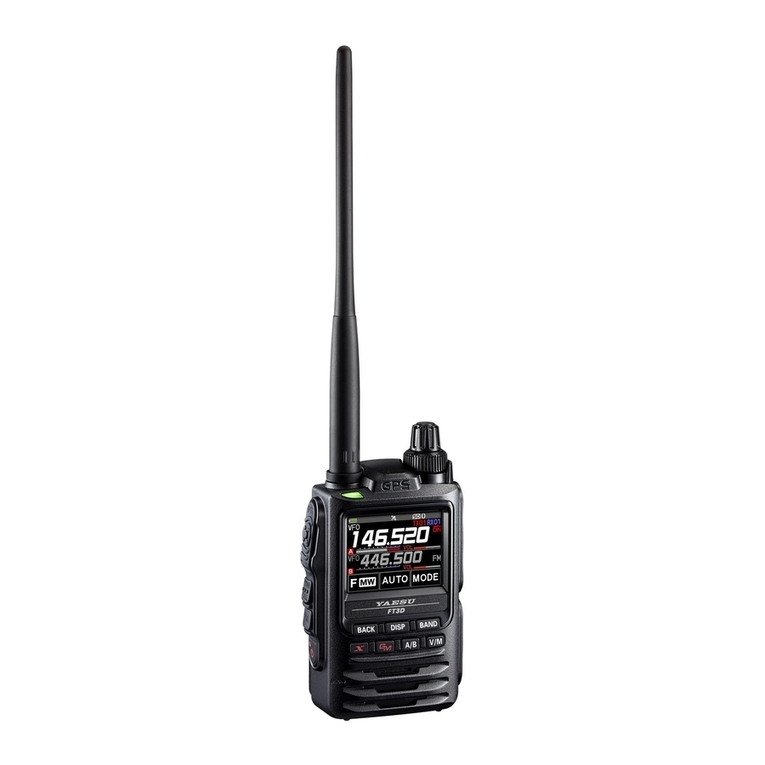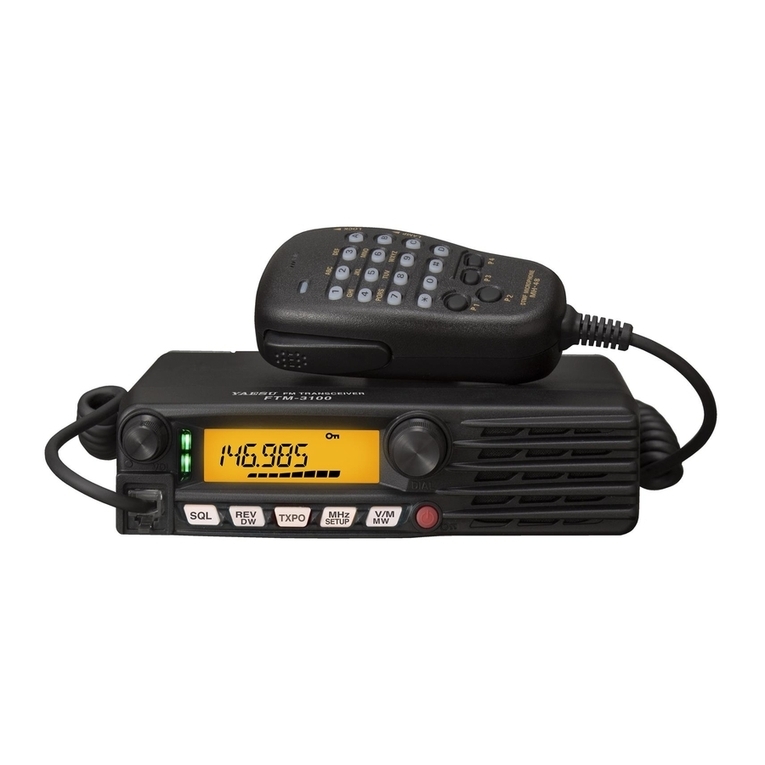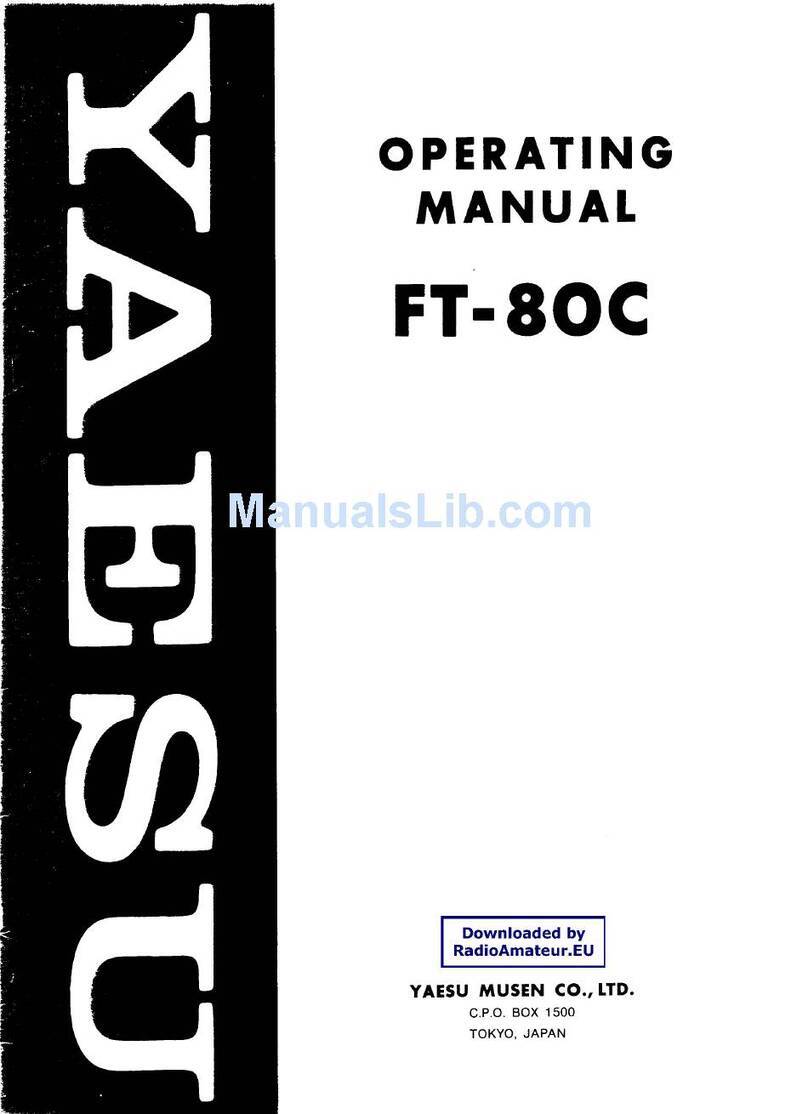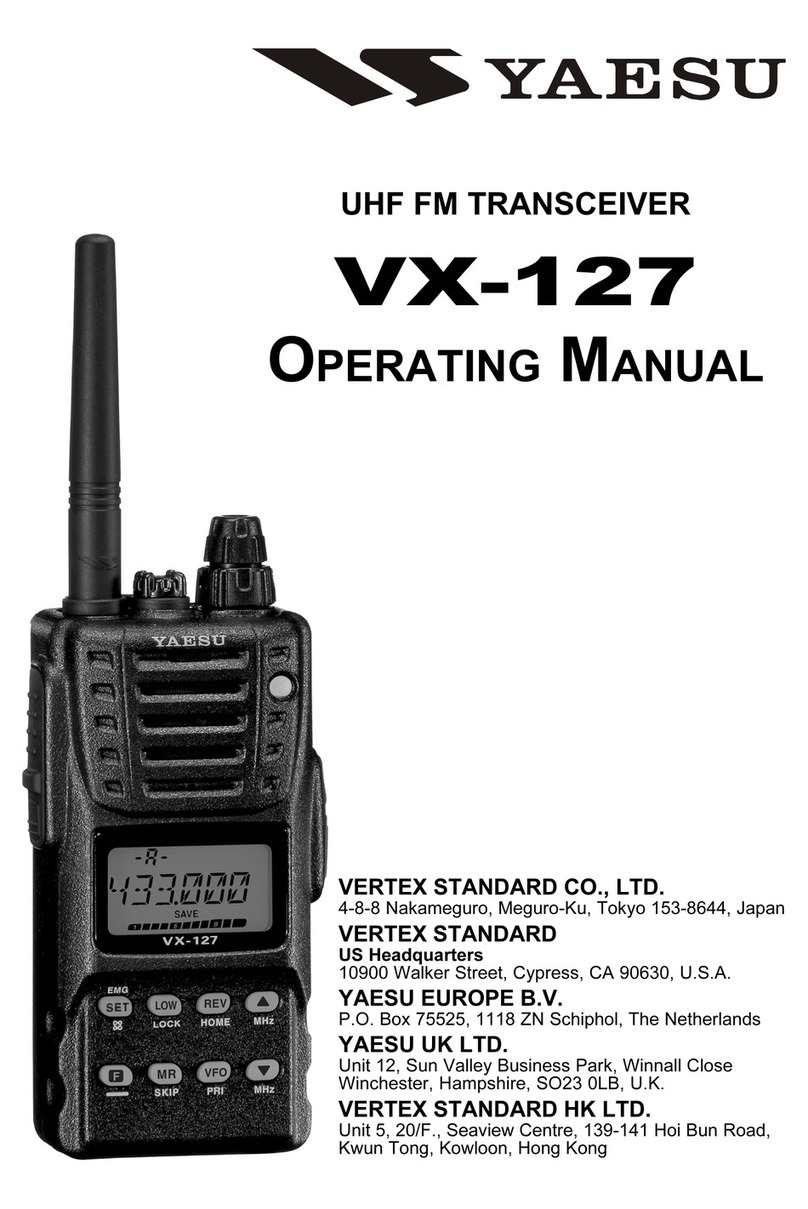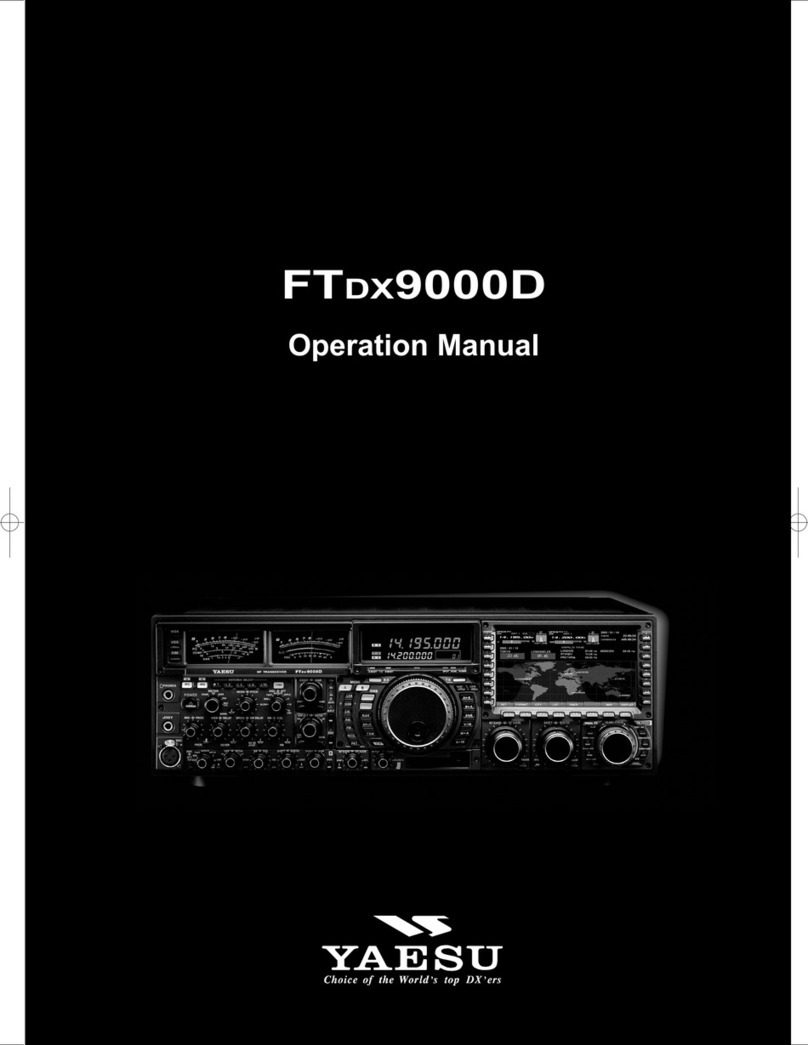Page 1FT-950 OPERATING MANUAL
GENERAL DESCRIPTION
Congratulations on the purchase of your Yaesu amateur
transceiver! Whether this is your first rig, or if Yaesu equip-
ment is already the backbone of your station, rest assured
your transceiver will provide many hours of operating plea-
sure for years to come.
The FT-950 is an elite-class HF transceiver providing ex-
ceptional performance both on transmit and receive. The
FT-950 is designed for the most competitive operating
situations, whether you primarily operate in contest, DX,
or digital-mode environments.
Built on the foundation of the popular FTDX9000 trans-
ceiver, and carrying the proud tradition of the FT-1000
series, the FT-950 provides up to 100 Watts of power out-
put on SSB, CW, and FM (25 Watts AM carrier). Digital
Signal Processing (DSP) is utilized throughout the design,
providing leading-edge performance, both transmit and
receive.
The Data Management Unit (DMU-2000) is available as
an option for the FT-950. It provides extensive display
capabilities via a user-supplied computer monitor. Included
are Band Scope, Audio Scope, X-Y Oscilloscope, World
Clock, Rotator Control, extensive Transceiver Status Dis-
plays, and Station Logging Capability.
For exceptional protection from strong signal interference,
the optional RF μTuning Kits may be connected via the
rear panel. The μTuning Kits provide extraordinarily sharp
selectivity, and protect your receiver from close-in inter-
ference on a crowded band.
In the front end, you may select one of two RF preamplifi-
ers, or IPO (Intercept Point Optimization) providing di-
rect feed to the first mixer. Three levels of RF attenuation
are available in 6-dB steps.
The FT-950 receiver utilizes DSP filtering, incorporating
many of the features of the FTDX9000, such as, Variable
Bandwidth, IF Shift, and Passband Contour tuning. Also
provided are Digital Noise Reduction, Digital Auto-Notch
Filtering and a manually tuned IF Notch filter.
On the transmit side, the Yaesu-exclusive Three-Band Para-
metric Microphone Equalizer allows precise and flexible
adjustment of the waveform created by your voice and
microphone. The Amplitude, Center Frequency, and Band-
width are adjusted separately for the low, mid-range, and
high-frequency audio spectra. The transmitted bandwidth
may also be adjusted.
Advanced features include: Direct Keyboard Frequency
Entry and Band Change, Speech Processor, IF Monitor
for Voice modes, CW Pitch control, CW Spot switch, Full
CW QSK, adjustable IF Noise Blanker, and all-mode
Squelch. Two TX/RX antenna ports are provided on the
rear panel. Two key jacks are provided (one on the front
and one on the rear panel). The key jacks may be config-
ured independently for paddle input, connection to a
straight key, or computer-driven keying interface. The CW
Message Memory is provided.
Frequency setup is straightforward on the FT-950. Enter
frequency directly for both VFO-A and VFO-B. Separate
keys are provided for band selection. Each band key pro-
vides three separate VFO settings for three different parts
of each band. You can establish three independent VFO
settings of frequency, mode, and filter for each band.
In addition, 99 memories are provided to store: Frequency,
Mode, IF filter selection, Clarifier offset, and Scan-skip
status. What’s more, five quick-recall (“QMB”) memo-
ries can instantly store operational settings at the push of a
button.
The built-in antenna tuner includes 100 memories that au-
tomatically store antenna matching settings for rapid au-
tomatic recall later.
Interfacing for digital modes is extremely simple with the
FT-950, thanks to the dedicated RTTY/PKT connection
jack on the rear panel. Optimization of the filter passband,
DSP settings, carrier insertion point, and display offset for
digital modes, is possible via the Menu programming sys-
tem.
Advanced technology is only part of the FT-950 story.
Vertex Standard stands behind our products with a world-
wide network of dealers and service centers. We greatly
appreciate your investment in the FT-950, and we look
forward to helping you get the most out of your new trans-
ceiver. Please feel free to contact your nearest dealer, or
one of Vertex Standard’s national headquarters offices, for
technical advice, interfacing assistance, or accessory rec-
ommendation. Watch Vertex Standard U.S.A.’s Home Page
for late-breaking information about Vertex, Standard Ho-
rizon, and Yaesu products: http://www.vertexstandard.com.
Please read this manual thoroughly, to gain maximum un-
derstanding of the full capability of the FT-950. We thank
you again for your purchase!



